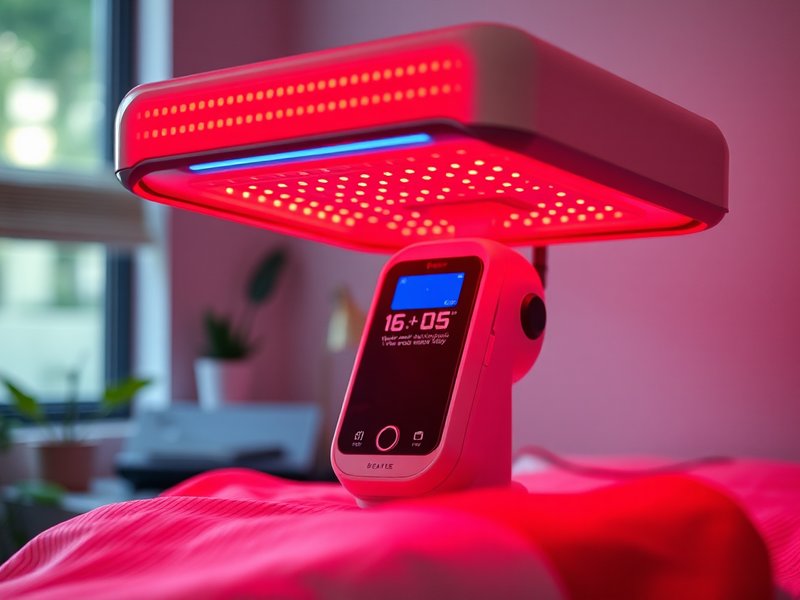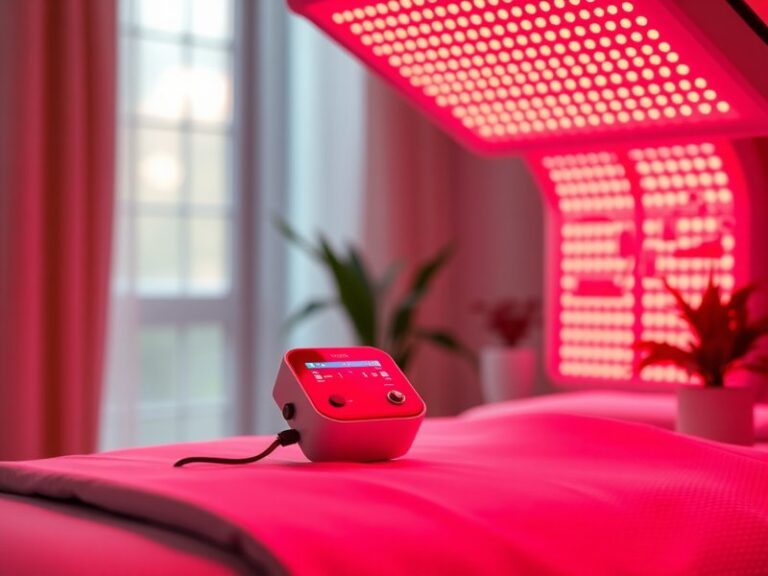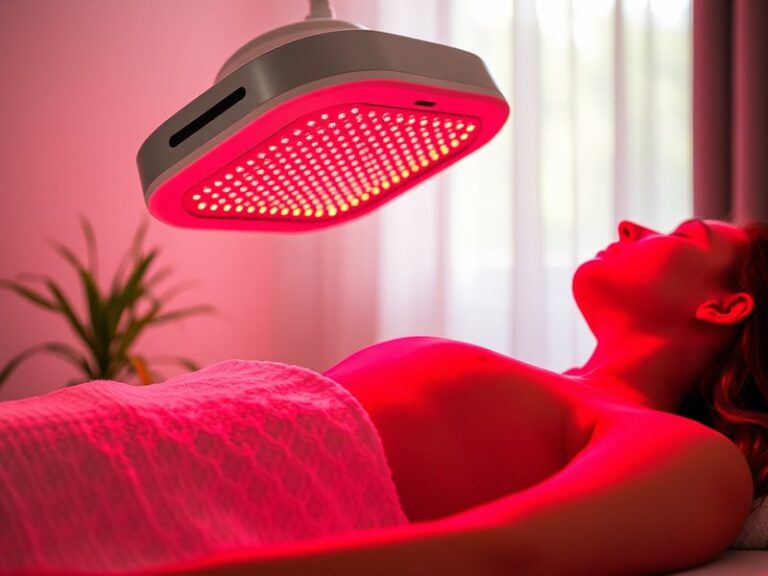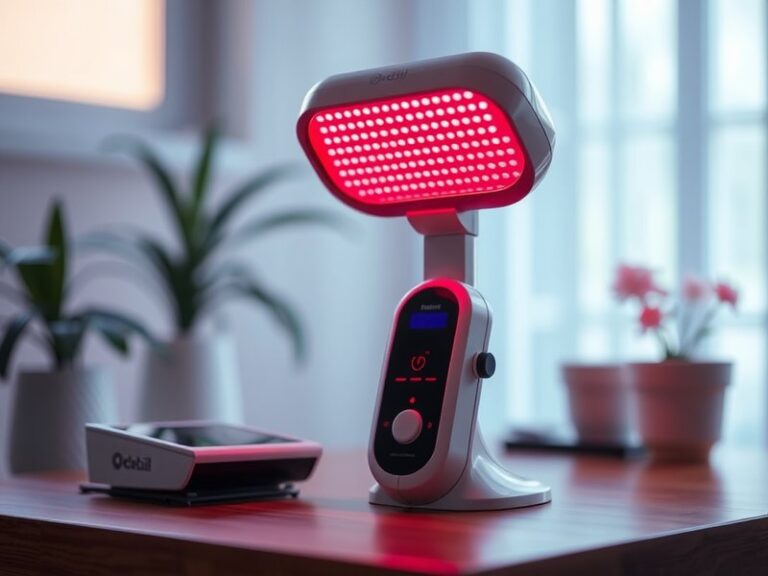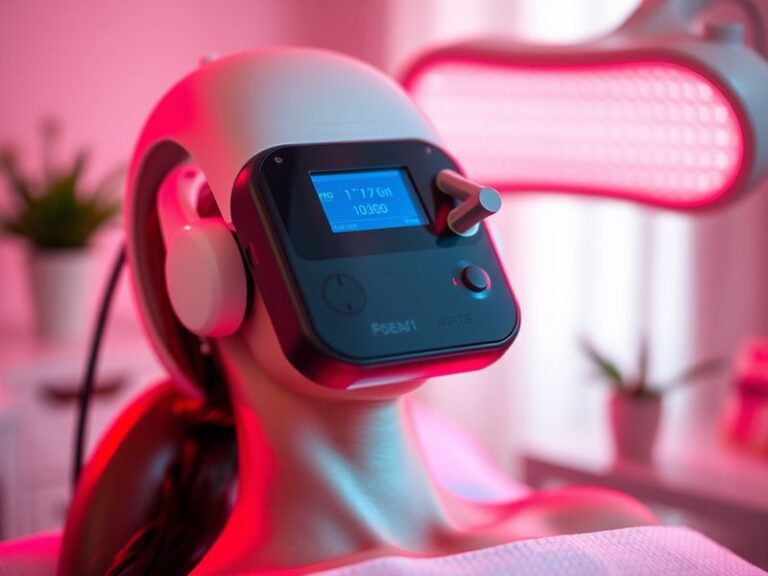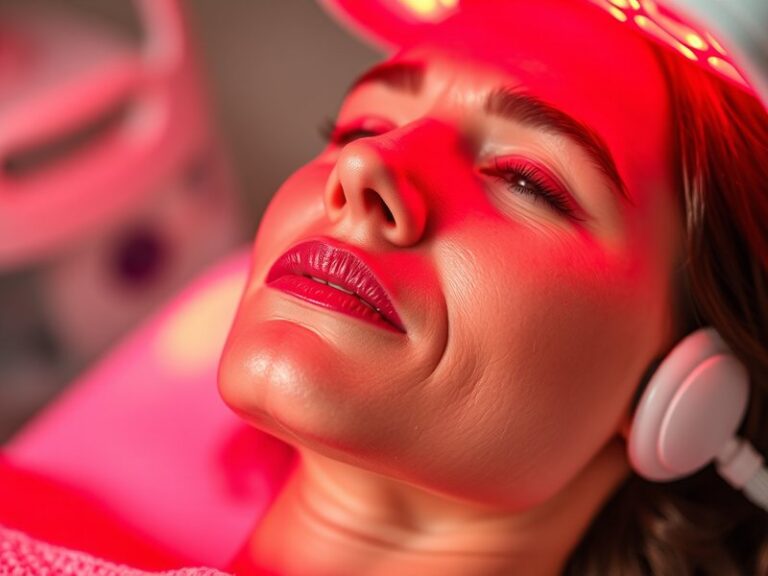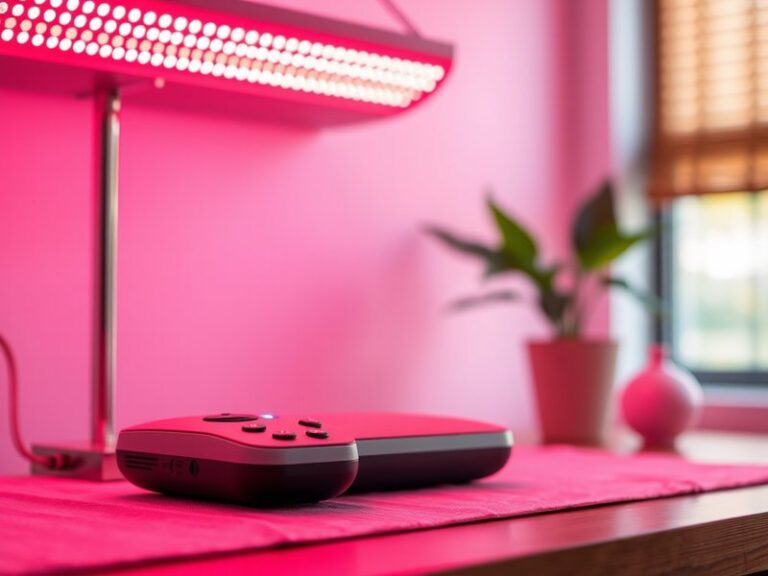How Much Red Light Therapy Do You Need?
How Much Red Light Therapy Do You Need?
Are you curious about how much red light therapy is necessary to see results?
Red light therapy (RLT) has gained popularity for its potential health benefits, including skin rejuvenation, pain relief, and improved healing. In this article, we’ll explore the recommended duration and frequency of red light therapy sessions, delve into the benefits of this treatment, and answer common questions about how to maximize its effectiveness.
Key Takeaways
- Duration and frequency depend on individual goals and the area being treated.
- Consistency plays a crucial role in achieving the desired benefits of red light therapy.
- Consultation with a healthcare provider can help tailor a regimen to best suit your needs.
What is Red Light Therapy?
Red light therapy is a non-invasive treatment that uses low-level wavelengths of red light to stimulate healing and tissue regeneration. This therapy works by penetrating the skin and enhancing cellular function, which can lead to various health benefits.
The technology often involves LED devices or laser light sources, typically used in clinics, spa settings, or at home with personal devices. RLT is increasingly employed in both aesthetic and medical contexts to address skin issues, reduce inflammation, and improve overall health.
Types of Red Light Therapy
- Clinical RLT: Administered by professionals using high-powered lasers, targeted for specific medical conditions.
- Home Devices: Portable devices designed for personal use, ideal for those seeking convenience for general wellness or cosmetic purposes.
What are the Benefits of Red Light Therapy?
Red light therapy offers a variety of advantages, which we will explore in detail.
Skin Rejuvenation
RLT is well-known for its ability to improve skin texture and tone. Regular treatments can boost collagen production, reducing the appearance of wrinkles and fine lines. Studies show that patients who undergo consistent red light therapy often experience a notable improvement in skin elasticity and hydration.
Pain Relief
Many individuals turn to red light therapy for its analgesic benefits. Research suggests that RLT can alleviate chronic pain conditions like arthritis and lower back pain by reducing inflammation and promoting blood flow to the affected areas.
Wound Healing and Tissue Repair
Red light therapy has been shown to accelerate wound healing, making it a popular choice for post-surgery recovery and sports injuries. The increased cellular activity helps in repairing damaged tissues and reduces scar formation.
Improvement in Mood and Sleep Quality
Some studies indicate that RLT can enhance mood and facilitate better sleep patterns. The therapy possibly influences melatonin production, promoting relaxation and improved overall well-being.
Is it Possible to Overdose on Red Light Therapy?
While red light therapy is generally considered safe, it’s essential to understand whether there’s a risk of overdoing it. Generally, excessive exposure may lead to skin irritation or discomfort, though instances of serious adverse effects are rare.
What are the Advantages of Limiting Red Light Therapy?
- Prevents Skin Irritation: Limiting exposure ensures that the skin does not become overstimulated.
- Optimizes Treatment Efficacy: Less can be more, as shorter sessions may be equally effective when conducted consistently.
- Allows for Individual Adjustment: Occasional breaks can help tailor the therapy based on how the body responds.
What are the Disadvantages of Excessive Red Light Therapy?
- Skin Sensitivity: Overexposure can lead to irritation, redness, or discomfort, similar to sunburn.
- Diminishing Returns: Frequent use without adequate breaks may impede healing, leading to less effective outcomes.
- Increased Costs: If using commercial devices or paying for treatments, excessive sessions can become financially burdensome.
What are the Things to Consider Before Starting Red Light Therapy?
Before diving into red light therapy, consider the following important factors.
Skin Type and Sensitivity
Understanding your skin type is crucial. Those with sensitive skin may need to start with shorter sessions to gauge their response.
Health Conditions
Consult a healthcare professional if you have underlying health issues (like skin disorders or light sensitivity) before starting therapy.
Device Quality
Using high-quality devices designed for red light therapy is essential for effectiveness. Look for reputable brands with verified clinical studies supporting their products.
Set Realistic Expectations
Results may vary from person to person. Patience and consistency in therapy can yield the best results over time.
Discover the complete guide Can Red Light Therapy Cause Breakouts?
What are the Alternatives to Red Light Therapy?
If red light therapy does not appeal to you, or if you’re considering other options, several alternatives are available.
Laser Therapy
Similar to red light therapy, laser therapy uses focused light beams to target specific issues like scarring, pigmentation, or hair restoration.
Microdermabrasion
This mechanical exfoliation technique improves skin texture and allows topical treatments to penetrate more effectively. While not a light therapy, it complements skin care routines aimed at rejuvenation.
Chemical Peels
Chemical peels can address skin concerns such as acne, pigmentation, and fine lines by removing the damaged outer layer of skin, promoting new growth.
Topical Treatments
Many over-the-counter products contain active ingredients like retinol or Vitamin C to enhance skin quality and fight signs of aging. These may be used alongside or instead of light therapies.
Conclusion: Is it Recommended to Start Red Light Therapy?
In summary, red light therapy is a valuable tool for enhancing skin health, relieving pain, and promoting healing. The appropriate duration and frequency of therapy may vary based on individual goals, and it’s crucial to approach this treatment with consideration of personal health and lifestyle factors. Consulting with a qualified professional can help establish a plan that works best for you.
Frequently Asked Questions
How often should I use red light therapy?
Most experts suggest starting with 2-3 sessions per week for 10-20 minutes. Adjust frequency based on your specific goals and skin responses.
See the whole article Is Red Light Therapy Good for Joints?
Can I use red light therapy at home?
Yes, there are many at-home red light therapy devices available. Ensure you choose a reputable product and follow the manufacturer’s instructions.
Is red light therapy safe for all skin types?
Generally, red light therapy is safe for most skin types; however, consult a professional if you have specific skin concerns or conditions.
How long does it take to see results with red light therapy?
Results can vary, but many users report improvements within 2-4 weeks of consistent treatment. Factors like treatment goals and skin condition influence outcomes.
Are there any side effects?
Most people experience minimal side effects, if any. Some may notice slight redness or warmth post-treatment, similar to sun exposure, but these effects typically resolve quickly.
